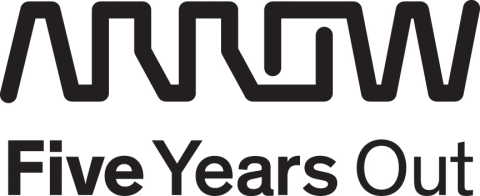Arrow Electronics Helps Disabled Driver Sam Schmidt Return to Competitive Racing
Arrow Electronics Helps Disabled Driver Sam Schmidt Return to Competitive Racing
CENTENNIAL, Colo.--(BUSINESS WIRE)--Disabled IndyCar race car driver Sam Schmidt has returned to auto racing with the help of Arrow Electronics, Inc. (NYSE:ARW), besting more than a dozen drivers in a recent two-day competition. Schmidt hadn’t raced competitively since crashing during a 200-mph practice lap 20 years ago, an accident that left him paralyzed from the shoulders down.
He returned to competitive racing in Arrow’s newest Semi-Autonomous Motorcar (SAM), a 2020 Chevrolet Corvette modified with electronic head and voice controls.
Schmidt was invited to race in the Optima Ultimate Street Car Challenge, a national racing series for amateur drivers who modify street cars for competition. He competed in the regional held Oct. 10-11, 2020 at the NCM Motorsports Park in Bowling Green, Ky.
The Challenge included four driving events plus an engineering and design presentation. Schmidt finished 34th overall out of 42 entries. He finished 12th overall in the Start/Stop event, which measures straight-line acceleration and braking.
The latest Arrow SAM prototype is a C8 Stingray. The Arrow car is modified with head controls, but not modified to boost performance like the other cars in the competition. The purpose of the SAM car is to demonstrate how technology can provide freedom and choice to people with disabilities, including high-performance driving.
“If you are able-bodied, technology makes life easier,” Schmidt said. “But for people with disabilities it can be life-changing, giving them a level of independence they haven’t seen before.”
Engineers upgraded several SAM features, including expanding the number of cameras to track Schmidt’s head movements more accurately. Four infrared cameras capture the driver’s subtle head movements by tracking landmarks on the driver’s sunglasses and helmet.
Two more cameras are 3D “time-of-flight” mapping units that confirm Schmidt’s nose position while his head is moving to generate a centerline in the SAM computer for precise tracking.
The cameras are controlled and their data processed by new SAM programming.
Another design improvement is moving the driver to the right-hand seat. This unorthodox position gives Schmidt considerably more room to enter and exit the vehicle using a lift, as well as room for engineers to install a racing seat and other safety features for higher performance driving.
Right-hand seating also allows the safety co-driver to use the factory-installed steering wheel and pedals from the left seat for maximum control in case of an emergency. Previous SAM cars used auxiliary co-driver controls that were adequate but not as responsive as the Corvette’s original equipment.
The goal of Arrow’s SAM Car project is to enable drivers with physical disabilities to experience the mobility and independence of driving again by leveraging the power of technology. The software and technology that Arrow developed for the car is open to the developer and engineering communities, and it has promising broader applications for independent living.
"This technology could eventually help a disabled person simply drive themselves to work—that's the one thing most disabled people want to do,” Schmidt said.
For the past two years, Arrow has collaborated with Schmidt’s nonprofit Conquer Paralysis Now and his DRIVEN NeuroRecovery Center in Las Vegas so that people disabled by military combat, spinal cord injuries, illness and aging can experience similar freedom in the Arrow SAM Car on closed courses.
For more information about the SAM Car project, visit arrow.com/SAM/ or keep up with SAM project developments on Twitter by following #ArrowDriven.
About Arrow Electronics
Arrow Electronics (NYSE:ARW) guides innovation forward for over 175,000 leading technology manufacturers and service providers. With 2019 sales of $29 billion, Arrow develops technology solutions that improve business and daily life. Learn more at FiveYearsOut.com.
Contacts
John Hourigan
jhourigan@arrow.com
